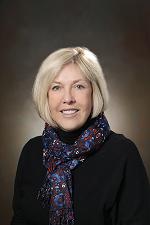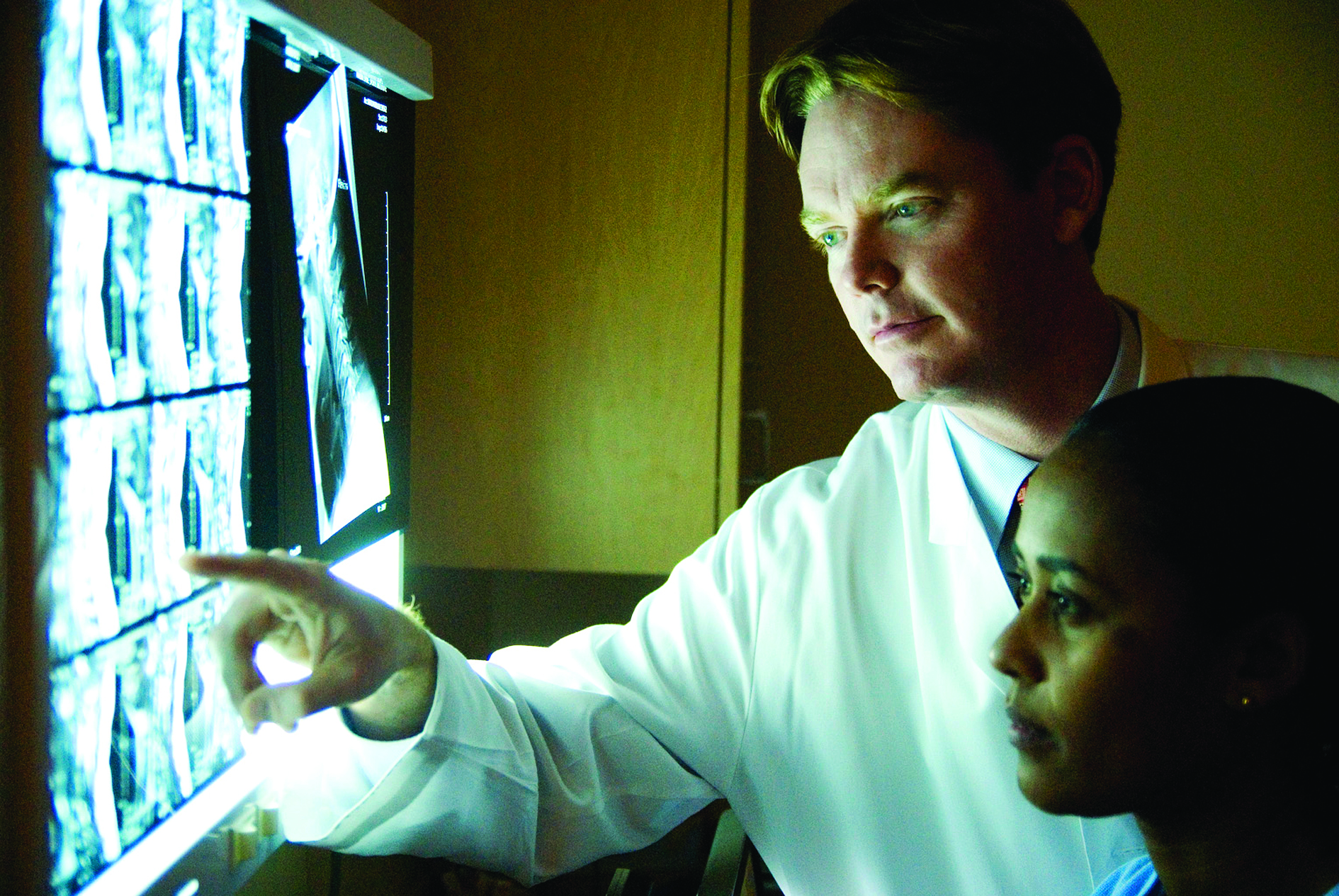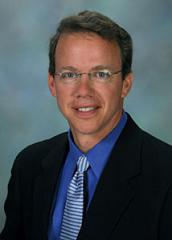Five spine surgeons discuss five of the largest challenges they are grappling with and strategies for coping with the forces that are shaping the future of spine.  1. Time management. The regulations of healthcare reform, financial obligations and patient care all crowd to the forefront of spine surgeons' schedules, demanding to be dealt with each day. The shift to a value-based system requires a significantly higher amount of data collection.
1. Time management. The regulations of healthcare reform, financial obligations and patient care all crowd to the forefront of spine surgeons' schedules, demanding to be dealt with each day. The shift to a value-based system requires a significantly higher amount of data collection.
"I have been collecting outcomes material in the office. We are going to have to look at what exactly we need to do and what resources we need to do it, while preparing for transparency with our patients. This is a time consuming and expensive venture," says Marilyn Gates, MD, neurosurgeon with Spectrum Health Medical Group in Grand Rapids, Mich. Spine surgeons not only need to make the time to collect outcomes and patient satisfaction data, but they also have to take the time provide patients with adequate education.
"We no longer have the luxury of time. Efficiency without the sacrifice of quality care means it is becoming more and more important to be effective at time management," says Tiffany Rogers, MD, MPT, an orthopedic spine surgeon at Torrance Orthopaedic & Sports Medicine Group and chair of orthopedics at Torrance (Calif.) Memorial Medical Center.
 Meeting the demands of patient care without the affecting quality requires spine surgeons to sacrifice in other areas. "Spine surgeons need to focus time and energy on each individual patient in order to understand and properly treat the pathology. I have sacrificed writing medical books, performing outcomes studies and contributing to the medical community. However, patients deserve our full attention so we can provide the best possible care," says Robert Watkins, Jr., MD, co-director of Marina Spine Center at Marina Del Rey (Calif.) Hospital.
Meeting the demands of patient care without the affecting quality requires spine surgeons to sacrifice in other areas. "Spine surgeons need to focus time and energy on each individual patient in order to understand and properly treat the pathology. I have sacrificed writing medical books, performing outcomes studies and contributing to the medical community. However, patients deserve our full attention so we can provide the best possible care," says Robert Watkins, Jr., MD, co-director of Marina Spine Center at Marina Del Rey (Calif.) Hospital.
The time consuming nature of spine practice has required renewed efforts in efficiency. The standardization of procedures is one key to increasing efficiency. Dr. Gates offers the example of standardized operating trays. Tools for spine surgery normally spread across two or three trays can be condensed to a single tray, eliminating the need to switch from tray to tray. Specialized instruments can be placed in storage labeled with surgeon names to be easily reached when needed. Standardized operating rooms can save on preparation, operation and turnover time, contributing to overall efficiency and time management.
 2. Declining reimbursement and increasing financial pressure. Though spine surgery is one the most complex branches of medicine, the intricacy of surgery is not the most difficult challenge spine surgeons must address on a daily basis. "It is not a clinical problem we are faced with, but receiving clearance and payment for the surgeries we do," says Douglas Geiger, MD, orthopedic spine surgeon at St. Joseph Mercy Ann Arbor (Mich.).
2. Declining reimbursement and increasing financial pressure. Though spine surgery is one the most complex branches of medicine, the intricacy of surgery is not the most difficult challenge spine surgeons must address on a daily basis. "It is not a clinical problem we are faced with, but receiving clearance and payment for the surgeries we do," says Douglas Geiger, MD, orthopedic spine surgeon at St. Joseph Mercy Ann Arbor (Mich.).
Spine practices have to shoulder the responsibility of receiving preauthorization for surgery and fighting denied claims or they must hire additional employees to do so. Both time and money spent on these issues contribute to higher overheads. Surgeons will have to begin making difficult decisions. "If reimbursements continue to drop and the approval process for tests and procedures continues to be more difficult, then I will have to limit my practice to favorable payors," says Dr. Watkins.
Physicians are often subject to the patient misconception that they lead a life unburdened by financial cares. The price of earning a medical degree, malpractice insurance fees and increasing overheads paired with steadily declining reimbursement creates significant financial pressure. To stay ahead of the curve, it is becoming increasingly necessary for spine surgeons to embrace the business elements of medicine, as well as the clinical. "When I entered medical school, I was preparing to take on the responsibility of patient care. I wasn't aware I would have to become an expert at business management as well," says Dr. Rogers.
 3. Relationship with insurance companies. The individuals at insurance companies responsible for denying or approving claims and authorizing procedures often don't have a clinical background. These individuals are rarely spine surgeons. Their decisions are based on lists and data that are decades out of date and in contradiction with criteria released by physician-led organizations such as the North American Spine Society. "We have exhausted all other alternatives by the time we arrive at the decision to proceed with surgery. It is frustrating for patients to be denied coverage for a surgery their physicians have decided they need," says Dr. Rogers.
3. Relationship with insurance companies. The individuals at insurance companies responsible for denying or approving claims and authorizing procedures often don't have a clinical background. These individuals are rarely spine surgeons. Their decisions are based on lists and data that are decades out of date and in contradiction with criteria released by physician-led organizations such as the North American Spine Society. "We have exhausted all other alternatives by the time we arrive at the decision to proceed with surgery. It is frustrating for patients to be denied coverage for a surgery their physicians have decided they need," says Dr. Rogers.
Spine surgeons have adapted to insurance company regulations to provide patients with needed treatment. Dr. Geiger explains that he works to use the vernacular insurance companies are comfortable with and look for in claims that will receive reimbursement. "Surgeons must use the words and phrases that Medicare and other payers are looking for in order to minimize denied claims and to more easily justify their anticipated surgery. For instance, specifying instability or spondylolisthesis in a given case where these conditions exist, will help the insurance payor to understand that a fusion procedure was necessary," says Dr. Geiger.
Communication with insurance companies can serve as the foundation of a solid working relationship. Dr. Gates has met with insurance company representatives. "If you meet with an insurance company you can demonstrate how quality outcomes are being reached. Point out your premium physicians. Build the criteria for what a center of excellence is and meet those criteria," says Dr. Gates. The more knowledge insurance companies gain of how spine surgery works, the better the working relationship spine surgeons will have with them.
While reining in insurance companies remains a daunting task with a path stretching far ahead, spine surgeons have begun to take the first steps. "Insurance companies are not being held accountable for delaying patient care. The biggest thing we need to do is regulate health insurance, not healthcare," says Neel Anand, MD, clinical professor of surgery and director of spine trauma at Cedars-Sinai Spine Center in Los Angeles. He stresses the importance of lobbying efforts and massive legislative change, though he acknowledges the enormity of the task ahead.
 4. Obstacles standing in the way of innovation. The field of spine has a remarkable wealth of new technology, but there are a number of stumbling blocks standing between an innovative idea and the operating room. The first obstacle is the approval process. Studies of a new device or technology can cost $30 million to $40 million prior to approval. "It has made companies shy of financing new technologies and in turn companies are becoming shy of studying new technology," says Dr. Anand. Innovations are making the arduous journey through the approval process, but this is not the final frontier.
4. Obstacles standing in the way of innovation. The field of spine has a remarkable wealth of new technology, but there are a number of stumbling blocks standing between an innovative idea and the operating room. The first obstacle is the approval process. Studies of a new device or technology can cost $30 million to $40 million prior to approval. "It has made companies shy of financing new technologies and in turn companies are becoming shy of studying new technology," says Dr. Anand. Innovations are making the arduous journey through the approval process, but this is not the final frontier.
Prospective randomized studies are being done and devices are receiving the required FDA approval, but failing to receive reimbursement from insurance companies. "The biggest attraction U.S. medicine has is the ability to innovate and we are losing our biggest claim," says Dr. Anand. The potential for innovation will always be there. Minimally invasive surgery and biologics continue to advance in the field. The key for the future will be in finding the resources and funding to take technology from an idea to a reality.
5. Self-organization and patient advocacy. If left unchecked, many fear these challenges will contribute to the declining number of physicians. "The forces at work now will not incentivize our best and brightest to spend 10 to 15 years receiving education for a field that does not offer the same satisfaction it once did," says Dr. Geiger. "Brilliant people will stop going into medicine if it becomes a field of only challenges and no rewards," says Dr. Anand.
If spine surgeons organize amongst themselves, they can initiate change and find possible answers to the challenges they face. "We tend to agree that we need to organize amongst ourselves, but this is a slow process. It may be hard to believe we can make a change in the long run, but change can start with one person," says Dr. Gates. Dr. Geiger explains that one of the key areas for surgeons to focus on together is the reduction of costs and elimination of waste. "I am involved in initiatives to reduce the length of stay, cost of implants and readmission rates," he says.
The challenges shaping how spine surgery is practiced every day are daunting, but not insurmountable obstacles. The best way these challenges can be met is through action, of both patients and spine surgeons. "Our strongest resource lies in democracy. Patients are smart and researching their care. They need to start advocating for themselves," says Dr. Anand. If patient advocacy and surgeon action become strong enough, it will only be a matter of time before changes begin to be made.
More Articles on Spine:
Facing the Challenges of Healthcare Spending & Patient Care: Q&A With Dr. Kenneth Hansraj of New York Spine Surgery & Rehabilitation Medicine
Advocating for Patient Access & Surgeon Needs: Q&A With Dr. Eeric Truumees of Seton Spine and Scoliosis Center
6 Spine Surgeons on Healthcare Reform Challenges
 1. Time management. The regulations of healthcare reform, financial obligations and patient care all crowd to the forefront of spine surgeons' schedules, demanding to be dealt with each day. The shift to a value-based system requires a significantly higher amount of data collection.
1. Time management. The regulations of healthcare reform, financial obligations and patient care all crowd to the forefront of spine surgeons' schedules, demanding to be dealt with each day. The shift to a value-based system requires a significantly higher amount of data collection. "I have been collecting outcomes material in the office. We are going to have to look at what exactly we need to do and what resources we need to do it, while preparing for transparency with our patients. This is a time consuming and expensive venture," says Marilyn Gates, MD, neurosurgeon with Spectrum Health Medical Group in Grand Rapids, Mich. Spine surgeons not only need to make the time to collect outcomes and patient satisfaction data, but they also have to take the time provide patients with adequate education.
"We no longer have the luxury of time. Efficiency without the sacrifice of quality care means it is becoming more and more important to be effective at time management," says Tiffany Rogers, MD, MPT, an orthopedic spine surgeon at Torrance Orthopaedic & Sports Medicine Group and chair of orthopedics at Torrance (Calif.) Memorial Medical Center.
 Meeting the demands of patient care without the affecting quality requires spine surgeons to sacrifice in other areas. "Spine surgeons need to focus time and energy on each individual patient in order to understand and properly treat the pathology. I have sacrificed writing medical books, performing outcomes studies and contributing to the medical community. However, patients deserve our full attention so we can provide the best possible care," says Robert Watkins, Jr., MD, co-director of Marina Spine Center at Marina Del Rey (Calif.) Hospital.
Meeting the demands of patient care without the affecting quality requires spine surgeons to sacrifice in other areas. "Spine surgeons need to focus time and energy on each individual patient in order to understand and properly treat the pathology. I have sacrificed writing medical books, performing outcomes studies and contributing to the medical community. However, patients deserve our full attention so we can provide the best possible care," says Robert Watkins, Jr., MD, co-director of Marina Spine Center at Marina Del Rey (Calif.) Hospital. The time consuming nature of spine practice has required renewed efforts in efficiency. The standardization of procedures is one key to increasing efficiency. Dr. Gates offers the example of standardized operating trays. Tools for spine surgery normally spread across two or three trays can be condensed to a single tray, eliminating the need to switch from tray to tray. Specialized instruments can be placed in storage labeled with surgeon names to be easily reached when needed. Standardized operating rooms can save on preparation, operation and turnover time, contributing to overall efficiency and time management.
 2. Declining reimbursement and increasing financial pressure. Though spine surgery is one the most complex branches of medicine, the intricacy of surgery is not the most difficult challenge spine surgeons must address on a daily basis. "It is not a clinical problem we are faced with, but receiving clearance and payment for the surgeries we do," says Douglas Geiger, MD, orthopedic spine surgeon at St. Joseph Mercy Ann Arbor (Mich.).
2. Declining reimbursement and increasing financial pressure. Though spine surgery is one the most complex branches of medicine, the intricacy of surgery is not the most difficult challenge spine surgeons must address on a daily basis. "It is not a clinical problem we are faced with, but receiving clearance and payment for the surgeries we do," says Douglas Geiger, MD, orthopedic spine surgeon at St. Joseph Mercy Ann Arbor (Mich.). Spine practices have to shoulder the responsibility of receiving preauthorization for surgery and fighting denied claims or they must hire additional employees to do so. Both time and money spent on these issues contribute to higher overheads. Surgeons will have to begin making difficult decisions. "If reimbursements continue to drop and the approval process for tests and procedures continues to be more difficult, then I will have to limit my practice to favorable payors," says Dr. Watkins.
Physicians are often subject to the patient misconception that they lead a life unburdened by financial cares. The price of earning a medical degree, malpractice insurance fees and increasing overheads paired with steadily declining reimbursement creates significant financial pressure. To stay ahead of the curve, it is becoming increasingly necessary for spine surgeons to embrace the business elements of medicine, as well as the clinical. "When I entered medical school, I was preparing to take on the responsibility of patient care. I wasn't aware I would have to become an expert at business management as well," says Dr. Rogers.
 3. Relationship with insurance companies. The individuals at insurance companies responsible for denying or approving claims and authorizing procedures often don't have a clinical background. These individuals are rarely spine surgeons. Their decisions are based on lists and data that are decades out of date and in contradiction with criteria released by physician-led organizations such as the North American Spine Society. "We have exhausted all other alternatives by the time we arrive at the decision to proceed with surgery. It is frustrating for patients to be denied coverage for a surgery their physicians have decided they need," says Dr. Rogers.
3. Relationship with insurance companies. The individuals at insurance companies responsible for denying or approving claims and authorizing procedures often don't have a clinical background. These individuals are rarely spine surgeons. Their decisions are based on lists and data that are decades out of date and in contradiction with criteria released by physician-led organizations such as the North American Spine Society. "We have exhausted all other alternatives by the time we arrive at the decision to proceed with surgery. It is frustrating for patients to be denied coverage for a surgery their physicians have decided they need," says Dr. Rogers. Spine surgeons have adapted to insurance company regulations to provide patients with needed treatment. Dr. Geiger explains that he works to use the vernacular insurance companies are comfortable with and look for in claims that will receive reimbursement. "Surgeons must use the words and phrases that Medicare and other payers are looking for in order to minimize denied claims and to more easily justify their anticipated surgery. For instance, specifying instability or spondylolisthesis in a given case where these conditions exist, will help the insurance payor to understand that a fusion procedure was necessary," says Dr. Geiger.
Communication with insurance companies can serve as the foundation of a solid working relationship. Dr. Gates has met with insurance company representatives. "If you meet with an insurance company you can demonstrate how quality outcomes are being reached. Point out your premium physicians. Build the criteria for what a center of excellence is and meet those criteria," says Dr. Gates. The more knowledge insurance companies gain of how spine surgery works, the better the working relationship spine surgeons will have with them.
While reining in insurance companies remains a daunting task with a path stretching far ahead, spine surgeons have begun to take the first steps. "Insurance companies are not being held accountable for delaying patient care. The biggest thing we need to do is regulate health insurance, not healthcare," says Neel Anand, MD, clinical professor of surgery and director of spine trauma at Cedars-Sinai Spine Center in Los Angeles. He stresses the importance of lobbying efforts and massive legislative change, though he acknowledges the enormity of the task ahead.
 4. Obstacles standing in the way of innovation. The field of spine has a remarkable wealth of new technology, but there are a number of stumbling blocks standing between an innovative idea and the operating room. The first obstacle is the approval process. Studies of a new device or technology can cost $30 million to $40 million prior to approval. "It has made companies shy of financing new technologies and in turn companies are becoming shy of studying new technology," says Dr. Anand. Innovations are making the arduous journey through the approval process, but this is not the final frontier.
4. Obstacles standing in the way of innovation. The field of spine has a remarkable wealth of new technology, but there are a number of stumbling blocks standing between an innovative idea and the operating room. The first obstacle is the approval process. Studies of a new device or technology can cost $30 million to $40 million prior to approval. "It has made companies shy of financing new technologies and in turn companies are becoming shy of studying new technology," says Dr. Anand. Innovations are making the arduous journey through the approval process, but this is not the final frontier. Prospective randomized studies are being done and devices are receiving the required FDA approval, but failing to receive reimbursement from insurance companies. "The biggest attraction U.S. medicine has is the ability to innovate and we are losing our biggest claim," says Dr. Anand. The potential for innovation will always be there. Minimally invasive surgery and biologics continue to advance in the field. The key for the future will be in finding the resources and funding to take technology from an idea to a reality.
5. Self-organization and patient advocacy. If left unchecked, many fear these challenges will contribute to the declining number of physicians. "The forces at work now will not incentivize our best and brightest to spend 10 to 15 years receiving education for a field that does not offer the same satisfaction it once did," says Dr. Geiger. "Brilliant people will stop going into medicine if it becomes a field of only challenges and no rewards," says Dr. Anand.
If spine surgeons organize amongst themselves, they can initiate change and find possible answers to the challenges they face. "We tend to agree that we need to organize amongst ourselves, but this is a slow process. It may be hard to believe we can make a change in the long run, but change can start with one person," says Dr. Gates. Dr. Geiger explains that one of the key areas for surgeons to focus on together is the reduction of costs and elimination of waste. "I am involved in initiatives to reduce the length of stay, cost of implants and readmission rates," he says.
The challenges shaping how spine surgery is practiced every day are daunting, but not insurmountable obstacles. The best way these challenges can be met is through action, of both patients and spine surgeons. "Our strongest resource lies in democracy. Patients are smart and researching their care. They need to start advocating for themselves," says Dr. Anand. If patient advocacy and surgeon action become strong enough, it will only be a matter of time before changes begin to be made.
More Articles on Spine:
Facing the Challenges of Healthcare Spending & Patient Care: Q&A With Dr. Kenneth Hansraj of New York Spine Surgery & Rehabilitation Medicine
Advocating for Patient Access & Surgeon Needs: Q&A With Dr. Eeric Truumees of Seton Spine and Scoliosis Center
6 Spine Surgeons on Healthcare Reform Challenges


